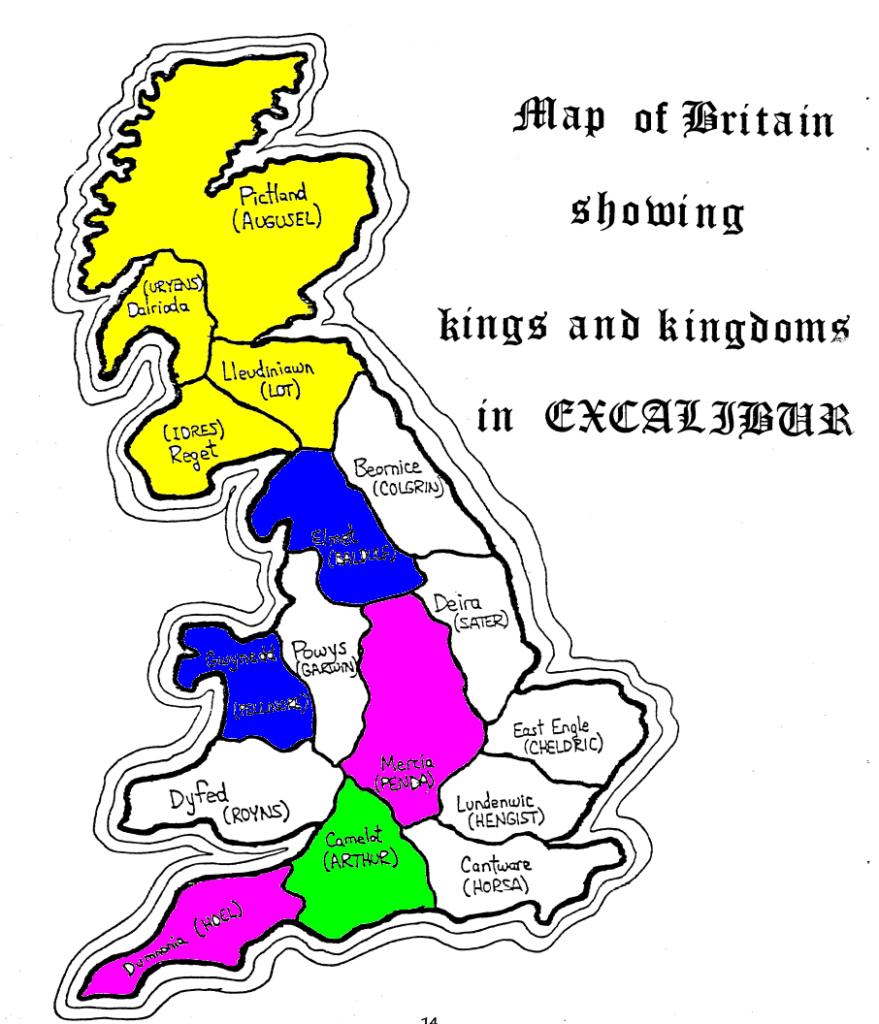Excalibur: Part 1, Part 2, Part 3, Part 4, R&R
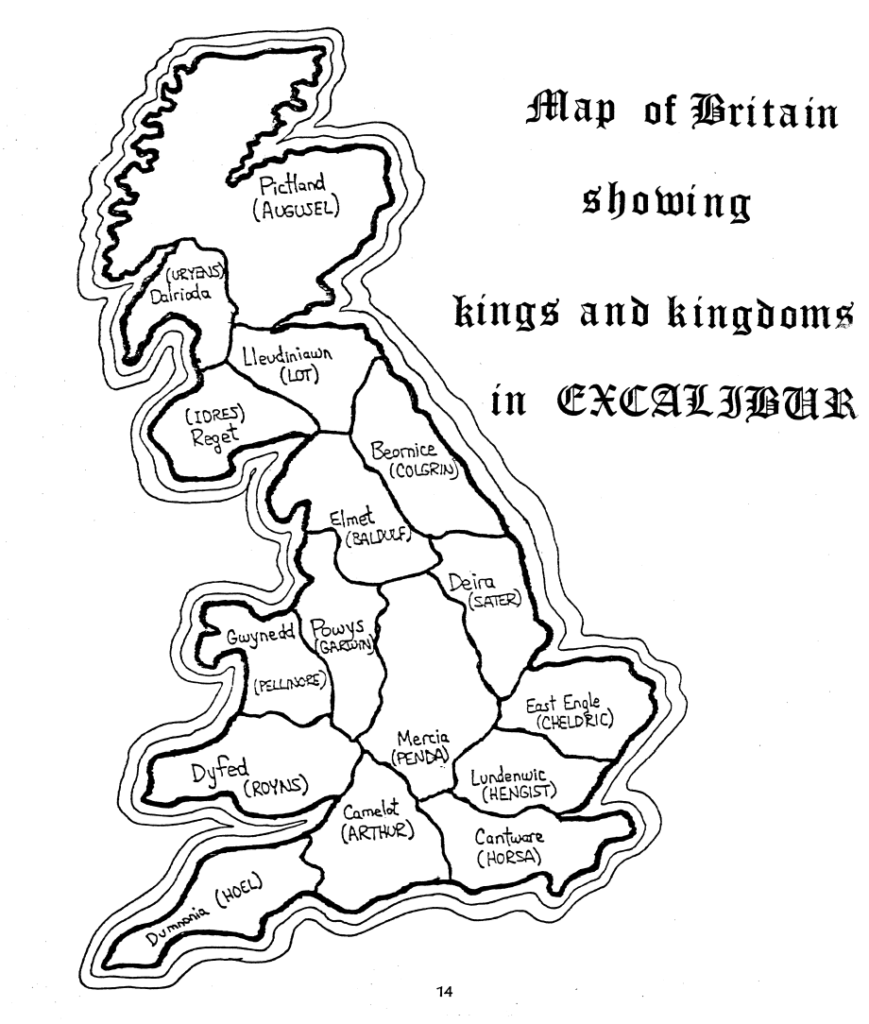
I had interrupted the previous session just as I was about to meet King Hengist on the battlefield to get some kingly street cred.
His army deploys on the battlefield, and I am a tad worried. He has 51 men-at-arms in total against 46 for me, and more Knights.
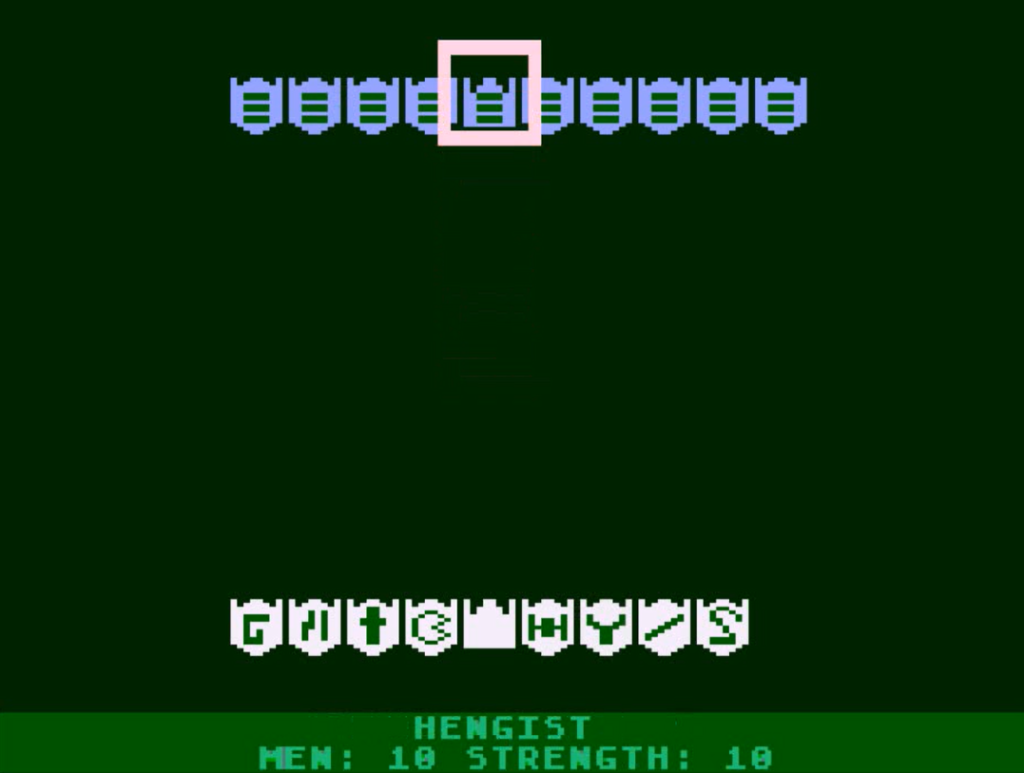
But I am worried for nothing. King Hengist’s army has very little experience. His weorod [warband] flees before contact. Hengist himself is blocked in his retreat by his own men. I approach and defeat him.
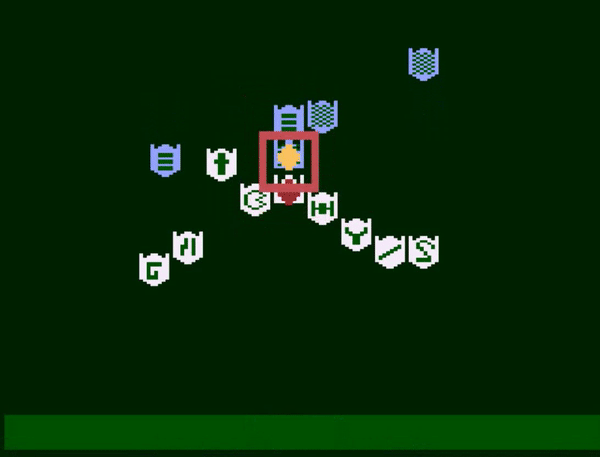
I lost 4 men to 9 for Hengist. I want to push further, but I am informed that I am under attack, so I return to Camelot.
In Camelot, I learn the name of my new opponent : King Horsa – Hengist’s brother and neighbour. Hardly a superpower, but he forcced me to turn back so I suppose mission accomplished for him. I am also notified of the arrival of a new Knight, Sir Tristram. He is absent from Merlin’s sacred novella, so I have no idea what he is worth.
King Horsa soon arrives in front of my castle. His army is only 37 men strong (including 8 Knights) and mine 48 men (including 9 Knights). His soldiers are however better trained than Hengist’s, and this time I need to actually fight. I still defeat him, both of us losing 9 men in the process.
When Horsa returns home, he immediately starts paying tribute. That’s not quite the same as a vassal, but it will do. Just behind Horsa’s messager there is another one from King Royns : war again !
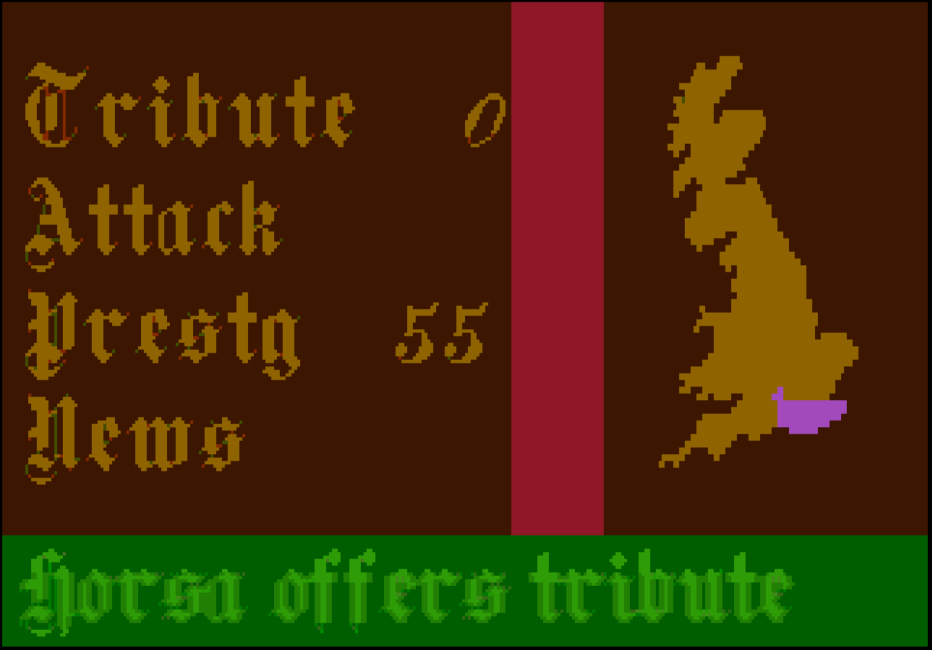
When King Royns attacks, I have 46 men-at-arms ready against 36 – it should be fine. His 7 Knights and 28 men-at-ams deploy in the usual battle line. King Royns’s men are steady, not one one his soldiers turn back before contact. The two armies collide. My Knights fall left and right and then I get stabbed in the face.
– What happened Merlin ? What is this place ? And where is my beard ?
– I am afraid you have been slain, Arthur ! Again !
– I expected death to be dif…
– That’s not death. Not really. Anyway, let’s reload back to before your death. I have that power.
– That’s… hard to believe. Do you think we could use this power to provoke in …
– No we can’t. Get ready, we are doing this battle again ! Try to be more careful this time, he is strong.
When King Royns attacks, I have 46 men-at-arms ready against 36 – it should be fine, though I have a bad feeling about it. His 7 Knights and 28 men-at-ams deploy in the usual battle line. King Royns’s men are steady, not one one his soldiers turn back before contact. The two armies collide. My Knights are soon in trouble, and I order some of them to retreat. I had stayed a bit behind during the battle, but I need to jump in to suppor…
– What happe….
– Dead !
– I expected death…
– I know ! Different ! I will roll-back to before your death !
– That’s hard to …
– No we can’t ! Try to remember this : don’t fight Royns. He has spent the last months, if not years, training his force.
– Wh…
When King Royns attacks, I have 46 men-at-arms ready against 36. It should be fine, but my gut-feeling tells me that it will be a dangerous battle. I had issues against Horsa, and with all my recent losses the average experience of my men-at-arms is starting to be low, while I don’t think King Royns has been in a lot of wars recently.
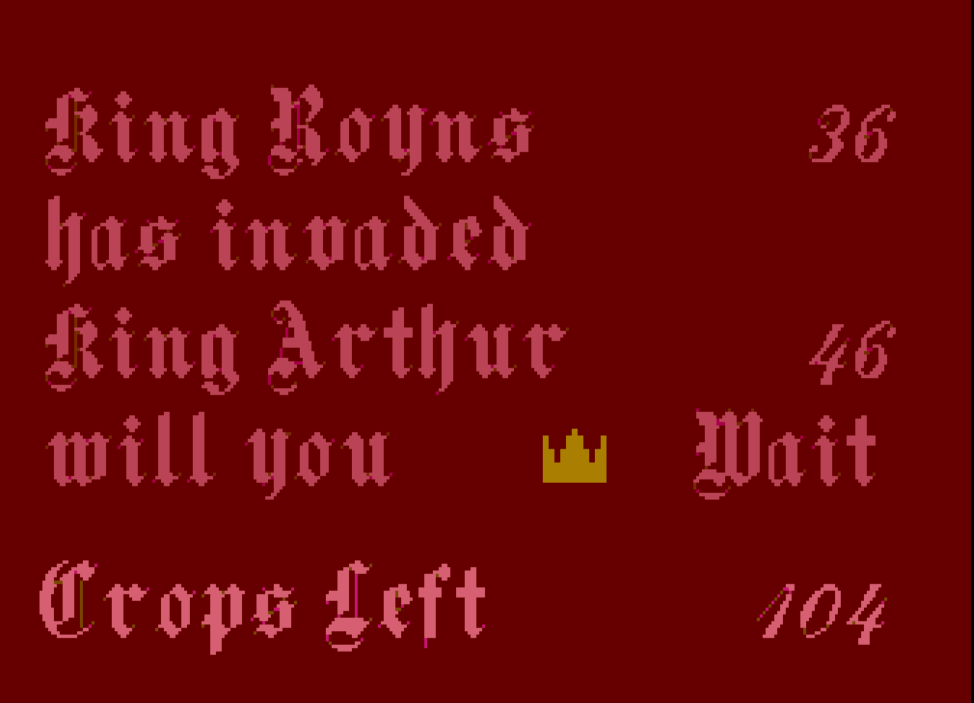
I refuse battle, and he almost immediately leaves. No beard for Royns this time either. And when he comes back to his Kingdom, King Royns… starts paying tribute, though only for a few weeks.
When Merlin returns, I ask him if I can visit King Royns. Going in his treasury room, I understand I was wise not to fight him : his troops have more than 90 in experience when mine are below 50 still.
My Kingdom is peaceful for some time, so I use the opportunity to train my men up to King Royns’ level. Everything is going well, I am wealthier than ever. The worst I have to live with is grumbles in the throne room, but the boys will manage.
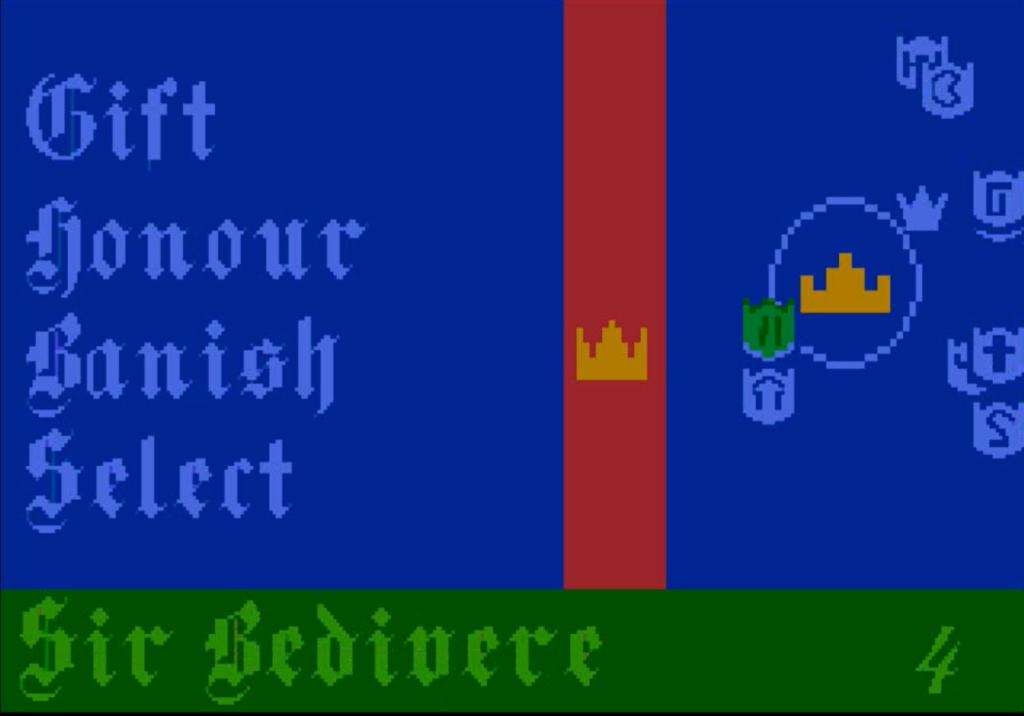
Only a few mon…
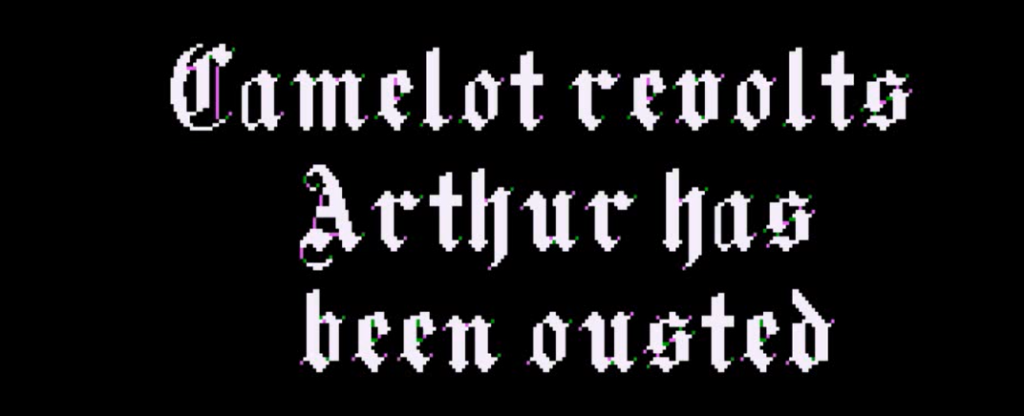
– …
– What are you doing here, Arthur ? How could you have died this time ? You were not at war !
– Died ? I am not dead ? I went to bed early ! Ah ! I see ! It is one of those weird dreams where I see the ghosts of past, present and future – except I am the ghost.
– No, no, you are dead for real. Let me see. Ah ! You were stabbed by your Knights during the night.
– Let me check who participated…. Sir Sremmus, Sir Drofwarc. No surprise there. “Sir” Percivale too. Even Sir Lancelot. I mean, not every liege manage to get stabbed in their sleep by holier-than-thou Lancelot but you did it. Only Sir Galahad and Sir Bedivere remained on the side.
– …
– Arthur, Arthur, I will roll back time once again. My advice – pay a bit more attention to how much your Knights and entourage like you, and don’t hesitate to banish those Knights who don’t like you.
– Roll back time ? What do you…
– And by “entourage”, I mean Gwynevere.
My Kingdom is peaceful for some time, so I use the opportunity to train my men up to Royns’ level. Still, there are noisy grumbles in my throne room. I take decisive action, and banish two Knights whose skill-to-grumbling ratio is too low : Sir Sremmus and Sir Drofwarc.
That’s not all ! I hear rumours that Gwynevere, my dear wife Gwynevere, has seduced my Nephew Mordred. True or false, I can’t have my reputation stained, and I do what any self-respecting King would do in those circumstances : I chase my wife away from my Kingdom. Hopefully, her father King Hoel will understand.
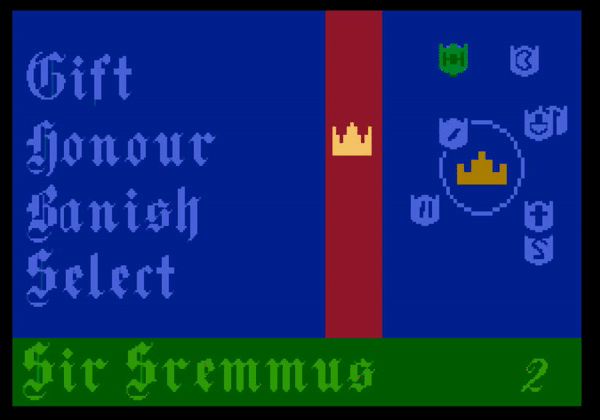
Merlin insists I also banish Mordred, calling him deceptive and even double-faced, but what does the old man know ? Mordred confessed to me he was bewitched by womanly artifices and I believe him. He is a good lad. from a great fam…
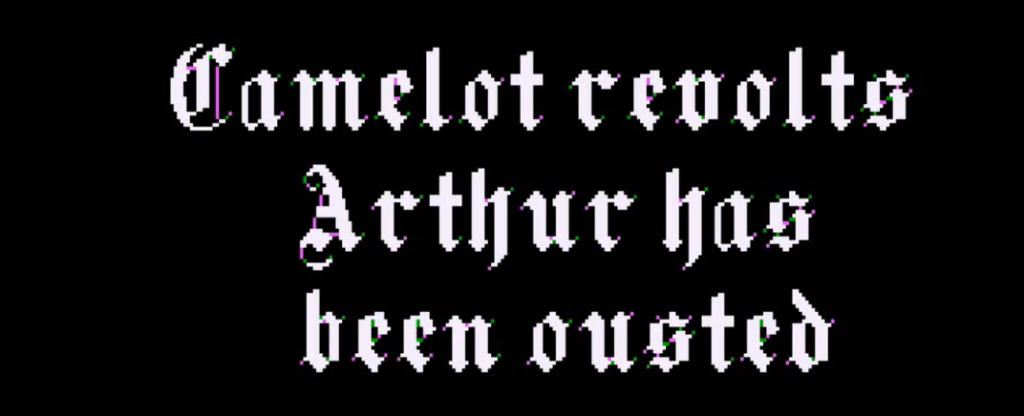
– What… ?
– Dead. Told you. No you can’t, though technically we are already very close to savescumming. “Entourage” includes Mordred.
That’s not all ! I hear rumours that Gwynevere, my dear wife Gwynevere, has seduced my Nephew Mordred. True or false, I can’t have my reputation stained, and I go what any self-respecting King would do in those circumstances : I banish both my wife and my nephew from Camelot. My heart bleeds at having to take this decision regarding the latter, but I am King, and a King cannot accept felonous Knights, family or not !
After those harsh decisions, Camelot enjoys a period of peace and growth. Sir Bors joins the Round Table. I use the tributes I receive to shower my Knights with gold while training my men-at-arms. Some Knights like Sir Galahad don’t get any closer to the round table, others are more appreciative of my generous gifts. I receive an unfriendly visit from King Penda, but his soldiers are unmotivated, and his whole force retreats before any combat.
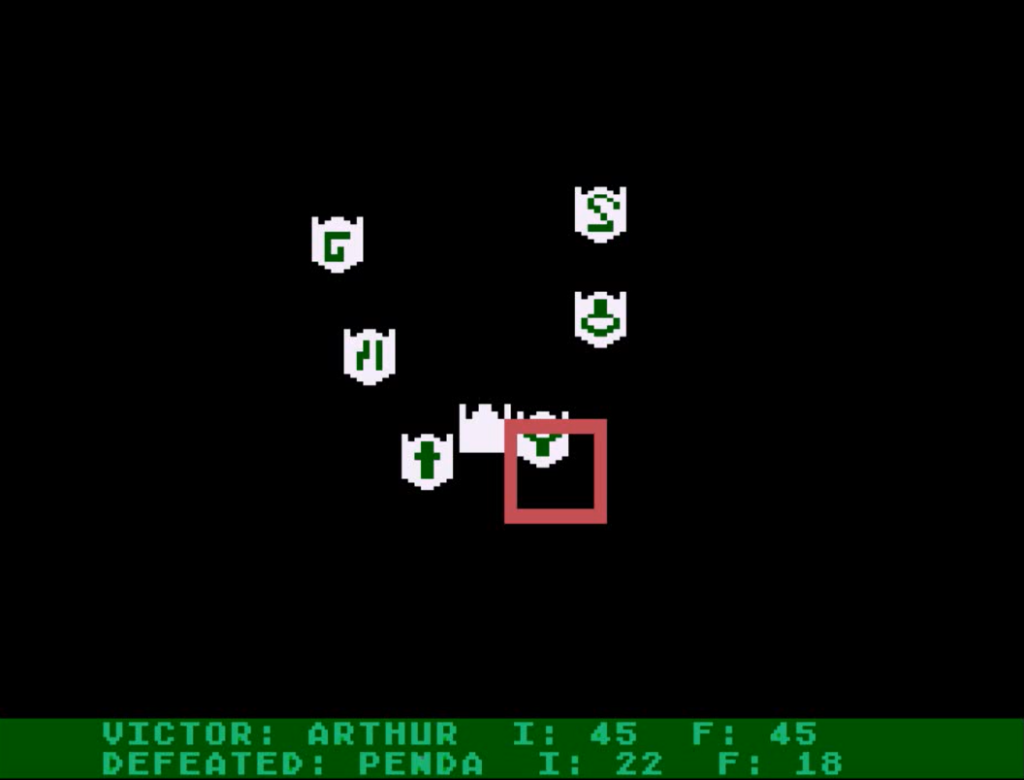
Defeating the mighty King Penda was easy, but it positionned me as the rising power in England, and I soon receive the vassalage of King Baldulf of Elmet and of King Idres of Reget. My prestige reaches an all-time high !
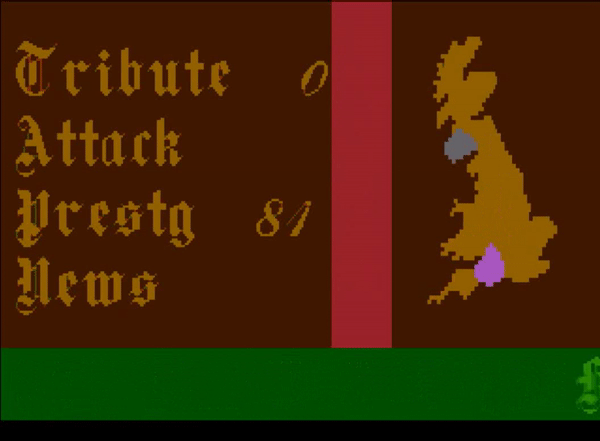
I tour England and visit the castles of my vassals, setting the tax rate and the tithe low so they can develop economically :
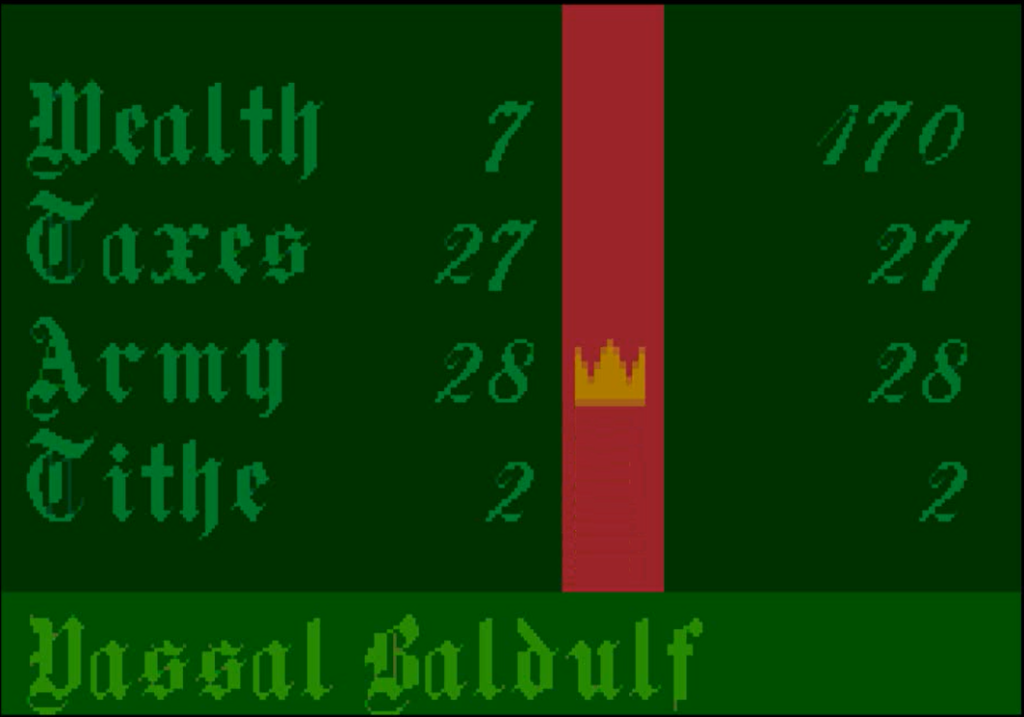
Having two Northern vassals turns out to be quite the poison pill. As a Lord, I owe protection to my vassals. Alas, there are still many independant Kings, and at any moment one or my vassals or myself is being attacked. I am stretched thin : I march North to join King Idres and together we repulse King Colgrin from Reget, immediately after that and with the same army I then rush South to Elmet to support King Baldulf against the relentless King Hengist, then must make haste to my castle because the Angle King Cheldric is making a bid for Camelot. While I wait for Cheldric, the Pictish King Augusel attacks Baldulf and King Uryens of Dairiada attacks King Idres, or maybe the other way around – honestly I lost track.
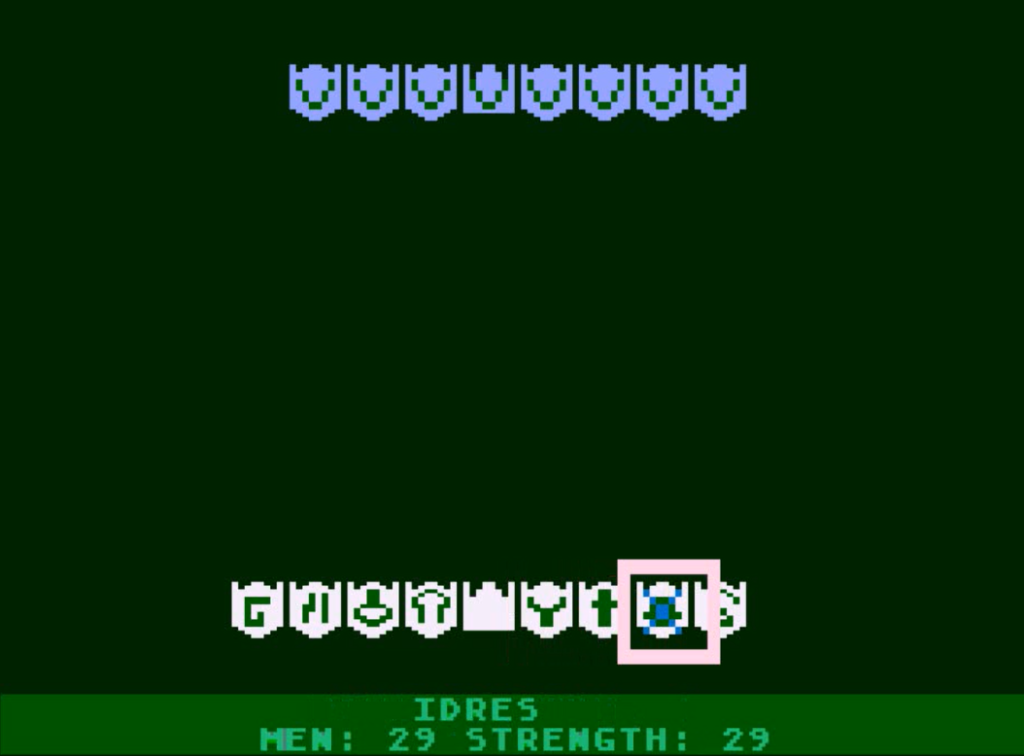
After defeating King Cheldric with some losses, I immediately take what’s left of my troops North again and reach King Baldulf’s castle just in time for his battle against King Augusel. We prevail, but that’s a pyrrhic victory : a good third of my army has been destroyed, and Sir Lancelot is among the dead.
But you should see the other guy ! King Augusel’s army is no more and I slayed most of his Knights – we all play by the same rules and those do not come back for the other Kings either. Despaired, King Augusel limps to King Uryens’s castle and requests to become a vassal ! He is joined in his plea by another “King” : Idres of Elmet. I have been unable (or, from his point of view, unwilling) to protect Idres from Uryens’s depredations, and from his point of view it might be safer to just pledge allegiance to his powerful neighbour.

King Uryens now has 3 vassals : Lot, Augusel and Idres. They are also easy to defend in their cosy Northern bloc. I am not sure why King Baldulf sticks with me : with my army still in shambles and relatively green due to how many men I had to replace I cannot come to Baldulf’s help when Penda attacks him.
As I was unable to protect my vassals and lost one of them, my prestige plummets to 40 and my Knights are starting to refresh their C.V.
And then, fate hands me an unexpected present :
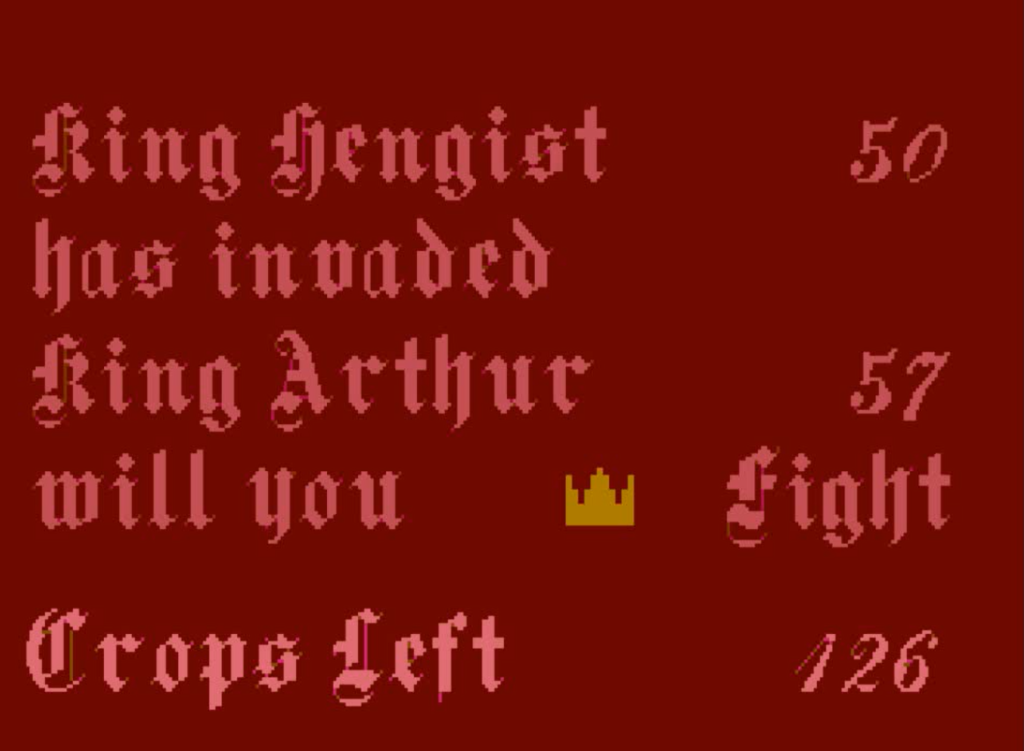
King Hengist decided to raid my castle with a large force which turns out to be the least prepared and trained army I have seen for a while. It is a slaughter !
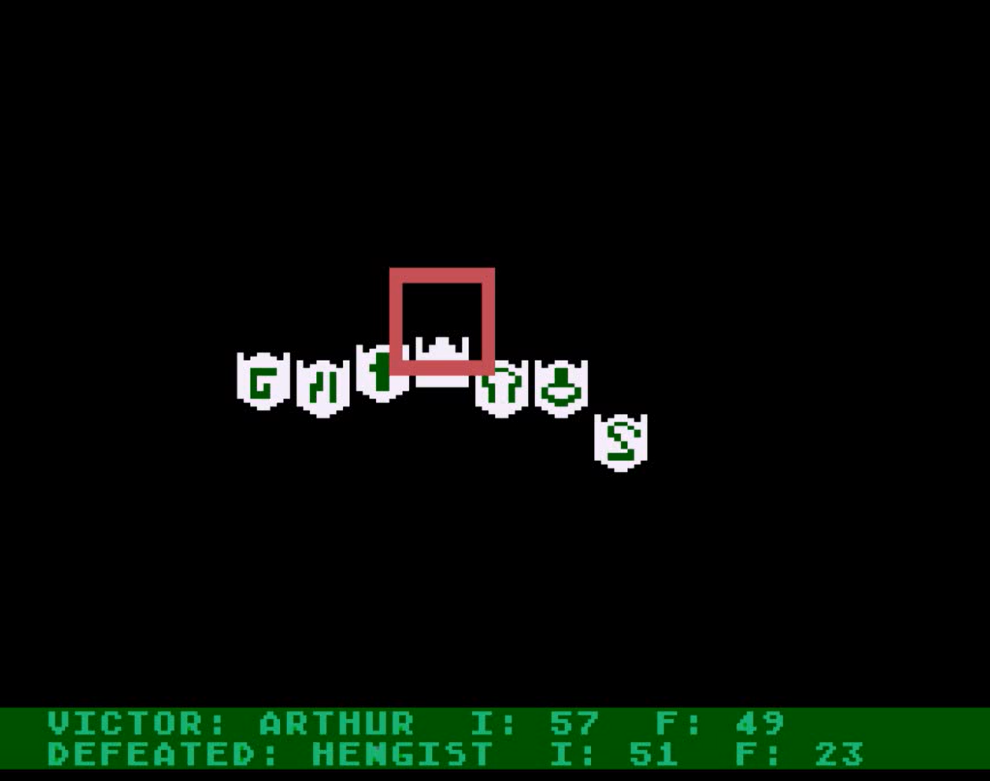
With half of Hengist’s army laying dead in front of Camelot, I raid King Hengist’s territory. King Hengist sorties and the size of his army surprises me : he managed to assemble a force of 50 men, though they are barely trained and easily defeated, netting me some additional prestige.
When I return to my castle, everything has changed. There are songs again in the throne room. My prestige is back to more than 50. Even better, King Pellinore of Gwynedd abdicated, and chose me as his Lord. Even King Penda started paying a tribute.
Maybe Merlin was right. Maybe I stand a chance against King Uryens. Maybe I can unite Britain. Maybe the next episode will be the last one !
